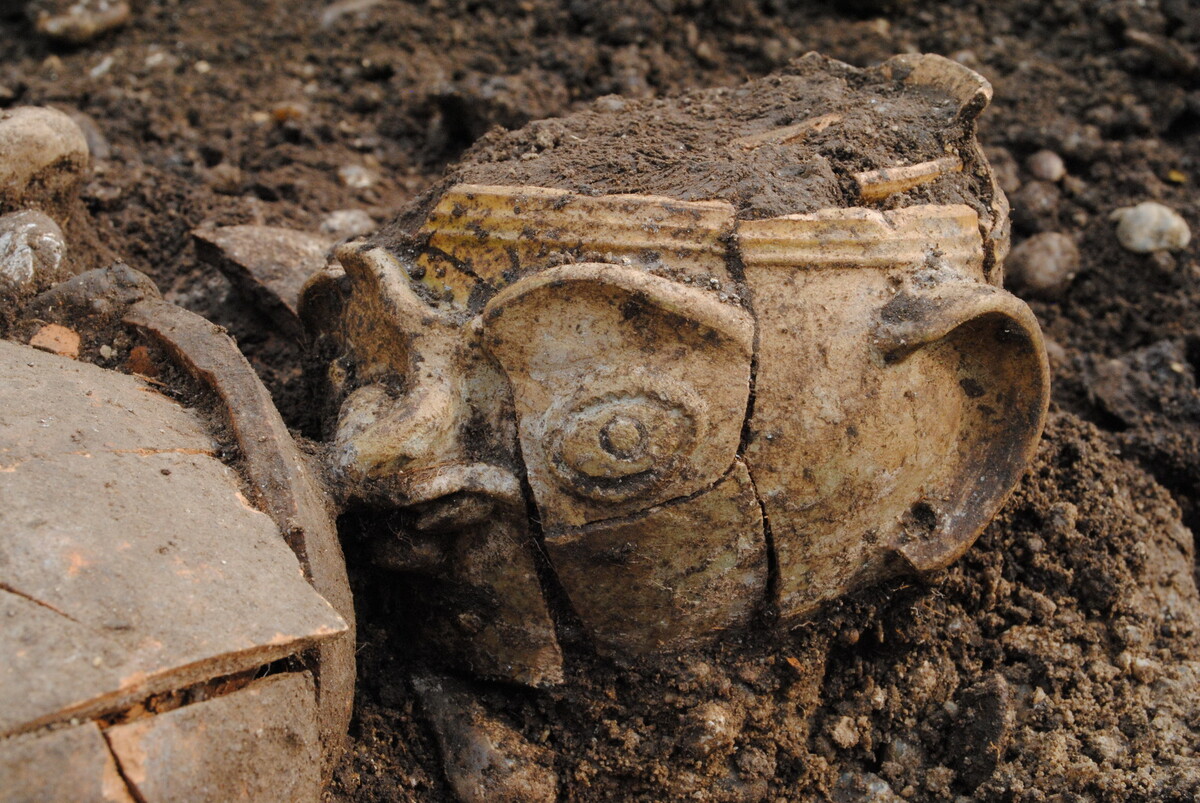Potzneusiedl: Analysis of an inhumation burial group of early Pannonians
With the discovery of the Potzneusiedl graves, the so-called Norican-Pannonian costume has now been definitively identified in the archaeological record. This group of inhumation burials indicates a strongly autochthonous character of those buried. Antiquarian analyses based on small finds, and bioarchaeological examinations should help in the investigation of the socio-cultural origin, the status, and the familial relationships of those buried here.
Discovery of the group of inhumation burials
Since the 1930s, Roman finds have repeatedly been discovered in the vicinity of the find site near Potzneusiedl (Burgenland). For this reason, the archaeological investigation of the area by the Federal Monuments Office (BDA) prior to the erection of a wind turbine was not surprising. Unexpectedly, in 2011 a section of a Roman era burial site was encountered: 48 cremation burials and 27 inhumation graves were able to be brought to light, whereby the inhumation burials represent the earliest and best-preserved Roman-period inhumation burials in north-west Pannonia to date.
The earliest inhumation burials from the north-west Pannonian region
The date of the inhumation burials, which are unusual for the north-west Pannonian region, can be described as thus far unique. The first graves were already laid out in the Tiberian period and therefore fall within an early phase of the history of the province. Furthermore, the find materials indicate contacts with the northern Danubian regions as well as with more southerly areas such as northern Italy.
The grave goods of the ›Norican-Pannonian‹ costume
With the Potzneusiedl graves, the ›Norican-Pannonia costume‹, until now almost exclusively recorded on grave stelai, can now for the first time be clearly recorded in large number in the archaeological evidence. In at least 11 of 27 inhumation graves, individuals were found who were equipped with elements of this clothing fashion. Amongst these are found Norican-Pannonian wing fibulae, eye- and disc fibulae, as well as a Norican-Pannonian belt fitting. In addition to these finds, very well-preserved ceramic grave goods and remains of wood on silver mirrors represent special features.
Issues
Together with the immediate location in the hinterlands of Carnuntum, the early date of the graves, the grave goods and the custom of inhumation burial raise numerous questions: to which period should the burials be precisely assigned? Can familial relationships between the individuals be recognised? May statements regarding the state of health as well as the age at death be made, which in turn allow conclusions regarding the social status of those buried? Can those interred perhaps be associated with a specific ›ethnic group‹ (Germans/Celts)? Which supra-regional contacts can be reconstructed based on the grave goods?
An interdisciplinary research approach
In the framework of the research project, the questions raised here will be pursued with the aid of antiquarian and bioarchaeological expertise based on small finds. The antiquarian analyses and the evaluation of the evidence are carried out by the project leader. Via the incorporation of anthropological investigations, the pathological degeneration and the age at death of the individuals will be illuminated. aDNA analyses should help to clarify familial relationships and sex-specific questions, amongst others. Finally, archaeobotanical and archaeozoological analyses will allow statements regarding the types of plants and animals used. With this interdisciplinary approach, as comprehensive a reconstruction as possible of the ancient living environment of these ›early Pannonians‹ should be feasible.
Principal Investigator
Team
Cooperations
- Stephan Schiffels – Angela Mötsch (Max-Planck-Institut für Menschheitsgeschichte, Abteilung für Archäogenetik)
- Konstantina Saliari (Naturhistorisches Museum Wien)
Duration
since September 2019


